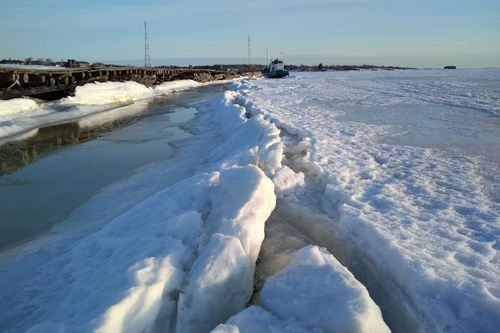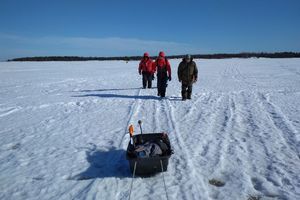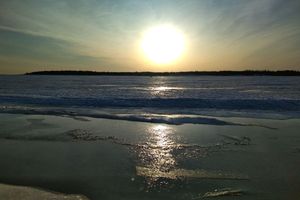From March 21 till March 25 staff of the Northern Water Problems Institute KarRC RAS and St. Petersburg branch of the Shirshov Institute of Oceanography are on an expedition in Rabocheostrovsk, Kem District, Republic of Karelia. The expedition is led by Alexey Tolstikov, Head of the Geography and Hydrology Laboratory of the Northern Water Problems Institute KarRC RAS.
- Our aim is to study biogeochemical processes in and under ice in the Kem River estuary. We started this work last year under state assignment and now continue it within a project funded by the Russian Science Foundation. The activities also include research of tidal wave transformation under the ice cover. Stand-alone moorings have been deployed for this purpose, – told Alexey Tolstikov.
The project "Ice cover effect on the White Sea ecosystem functioning in a changing climate" won a grant from the Russian Science Foundation on March 1st. According to Alexey Tolstikov, the winter conditions in the White Sea have been studied sporadically in previous years, mainly on a small scale in coastal areas. However, knowledge of the thermo-hydrodynamic and biogeochemical processes under and inside ice is important for a holistic understanding of the functioning of marine ecosystems, their variability and response to climatic and anthropogenic impacts.
The data available so far on under-ice processes, accumulation of nutrients in sea ice, structure of sea-ice communities, and migration of substances upon ice cover degradation is insufficient. The problem is that organizing relevant in situ experiments is a challenging task: studying ice degradation processes is technically complicated and may be dangerous for the researchers. Meanwhile, it is necessary to estimate the input of nutrients to water and ice drift induced by currents. Scientists intend to fill in the data gap and build the first model of the White Sea ice community based on the newly obtained knowledge.
– The White Sea is a convenient body of water for elaborating the methods, models, and algorithms of solving various problems by numerical simulations, – remarked the project leader. – There are few known integrated models that describe the sea as a holistic ecological and hydrophysical system. Yet, only such models can provide answers to questions about how much the sea is affected by various catastrophic phenomena and major systemic changes, including climate change or by intensification of terrestrial and atmospheric forcings.
Karelian scientists have a good background for fulfilling such an ambitious task. The Institute of Applied Mathematical Research KarRC RAS has developed a 3D mathematic model –JASMINE, to describe the White Sea water and ice dynamics.
The new project, designed for years 2022–2023, envisages multidisciplinary winter expeditions, determination of nutrient concentrations is sea ice cores and ice cores from river estuaries, analysis of satellite imagery and data on the ice situation in the White Sea over the last 20 years, and spatio-temporal mapping of ice development processes.
Photos by Alexey Tolstikov
News
See also:
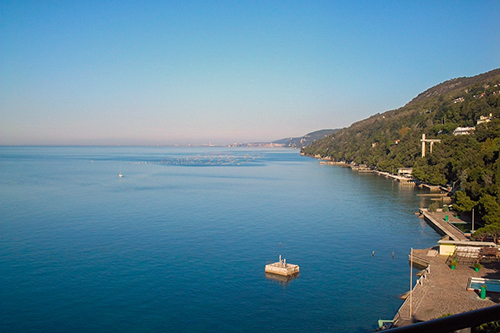
January 10, 2026
New light scattering model to help assess and predict the state of marine systems
An international research team has developed a three-stream model of light scattering in the sea. It processes satellite data on the incoming and emitted light fluxes into information on water characteristics: presence of impurities, phytoplankton concentration, pollutants, and other parameters. The system of equations for this study was written by Ilya Chernov, Senior Researcher at the Institute of Applied Mathematical Research KarRC RAS. The model has been successfully tested in the Mediterranean Sea, and researchers are interested in trying it in application to the Arctic.
An international research team has developed a three-stream model of light scattering in the sea. It processes satellite data on the incoming and emitted light fluxes into information on water characteristics: presence of impurities, phytoplankton concentration, pollutants, and other parameters. The system of equations for this study was written by Ilya Chernov, Senior Researcher at the Institute of Applied Mathematical Research KarRC RAS. The model has been successfully tested in the Mediterranean Sea, and researchers are interested in trying it in application to the Arctic.
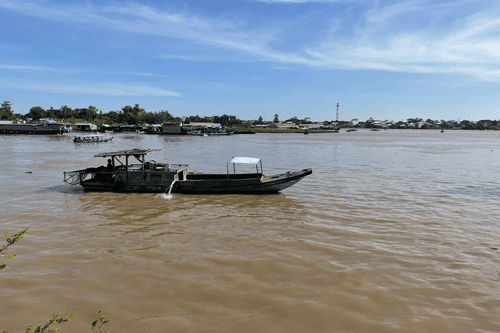
January 8, 2026
Karelian scientists surveyed the Mekong River Delta within a Russia-Vietnam project
Researchers from the Institute of Biology KarRC RAS Viktor Voronin and Dmitry Bityutsky took part in an expedition to the Mekong River Delta in Vietnam, which collected biological material for assessing the ecological status and biological resources of the Mekong Delta using biochemical profiling methods within an international cooperation initiative.
Researchers from the Institute of Biology KarRC RAS Viktor Voronin and Dmitry Bityutsky took part in an expedition to the Mekong River Delta in Vietnam, which collected biological material for assessing the ecological status and biological resources of the Mekong Delta using biochemical profiling methods within an international cooperation initiative.
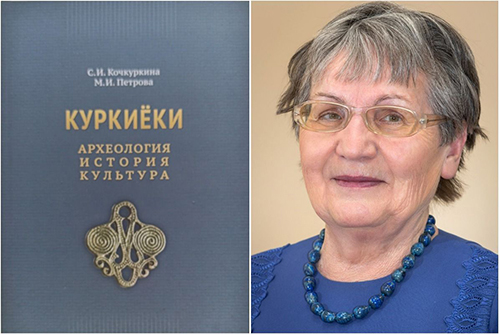
January 5, 2026
Archaeologist Svetlana Kochkurkina: “I wrote this book out of gratitude to people of Kurkijoki Village”
The new book "Kurkijoki. Archaeology, History, Culture" has turned into a notable event for the academic community, as well as for enthusiasts of Karelian archaeology and history. The authors of the monograph are Svetlana Kochkurkina, Leading Researcher, Archaeology Section ILLH KarRC RAS, and Marina Petrova, Director of the Kurkijoki Local Lore Centre. The work summarizes the findings from many years of research into the archaeology, history, and culture of the Kurkijoki Village and its surroundings.
The new book "Kurkijoki. Archaeology, History, Culture" has turned into a notable event for the academic community, as well as for enthusiasts of Karelian archaeology and history. The authors of the monograph are Svetlana Kochkurkina, Leading Researcher, Archaeology Section ILLH KarRC RAS, and Marina Petrova, Director of the Kurkijoki Local Lore Centre. The work summarizes the findings from many years of research into the archaeology, history, and culture of the Kurkijoki Village and its surroundings.




